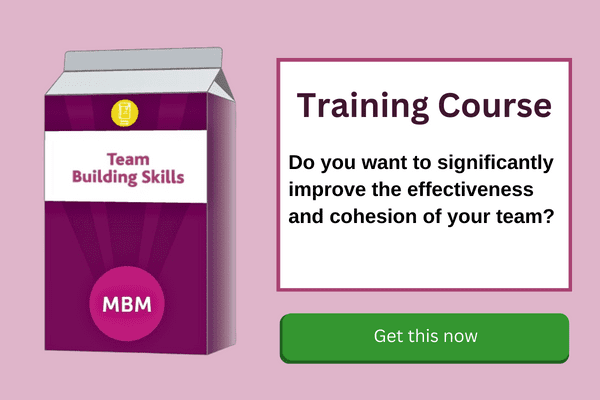Induct Employees to Reduce Turnover
According to research from the Business Advice website, the average cost of replacing an employee in the UK is £11,000. One way to retain your new employees is to implement an effective new employee induction process. Inducting new employees correctly into the company is important. Implementing an effective company induction process can greatly reduce turnover within the first 90 days. Also, it shows your investment in your new team member.

What is an Induction Process?
Induction, also known as onboarding or organisational socialisation, is the process where a new employee is introduced and integrated into the business. They are trained and given knowledge about the company’s culture, people, services, and customer base to lead to an effective employment relationship.
A successful induction procedure will inspire new employees and it integrates them into your company’s culture. S. Chris Hammonds, author of The Culture Engine says, ‘You illustrate for them, vividly, how your cultural values are brought to life through your team members’ relationships, collaboration, and final offering to the marketplace.’ He also says, ‘Your newest employees learn not just what they’ll do to put their talent to use for you, but also how they’re expected to work with others and for what greater purpose.’
Your employee induction program will help them learn about the organisation’s values and mission. Also, it will help them to understand the company’s goals and directions as well. It is more than just showing an employee the ropes on the job. It is showing them an overall view of the organisation and it is integrating them into the company.
You want your new employees to become engaged with the company. Engaged employees perform better. They are invested. Therefore, inducting your employees effectively is very important and critical to your organisation’s success.
Why is an Induction Process Important?
Recent surveys show that:
- 28% of new employees quit within the first 90 days on the job.
- 43% of employees who left a job within the first 90 days did so because the day-to-day job wasn’t what they were expecting.
It is important to give clear and realistic information about the company, department, and the job during the interview and before the employee starts. Then, they should receive a good, detailed induction program. This will start the path for them to become high performers.
Many times, a new employee will start a job and find out the company is not ready for them. How many times have you started a new position and you’ve had to sit and wait for people to meet with you? Or give you paperwork? How many times have people seemed impatient, hurried, and don’t have time to explain duties to a new member of staff?
The induction program lets your new employee know you have time for them and you want them there.

Forming an Induction Process
When designing and implementing your induction process you should:
- Break your induction program down into parts. Ensure you detail all the important areas. The process shouldn’t be completed in one day. It should be divided up between people.
- Create inventive methods to help the employee retain the information.
- Make a staff induction checklist of everything you would like covered and put ‘Day 1’, ‘Day 2’, etc. and who is responsible on the list. Don’t overwhelm them with too much information at once.
- Ensure you promote positive conversations. Let your new employee know the company is invested in them. Engaged employees ensure your organisation is successful.
If you are rushing your new employee and not giving them proper training, they may question why they left their last job. Some may not return the next day if they are too overwhelmed. That is why it is important to break up your induction program in segments to ensure they capture the needed information at the right time.
Your employee induction program should:
- Make the new team member feel welcome.
- Show your company culture.
- Give new employees good information about the company and what they want to accomplish.
- Show them how they can be successful in the organisation.
- Let them know the company values them and wants them to succeed.
Sticky Learning ® is 7 times more effective than 1-day training courses. Plus, you will get a Chain of Evidence proving your Return on Investment. Discover soft skills training that changes behaviours long term.

Before the New Employee Begins

Before your new employee starts the first day, you should:
- Assign a good trainer or mentor. This person is patient, a good communicator, and likes to help new people.
- Ensure the mentor understands the importance of the program. Confirm everyone who will be training or mentoring the new employee understands the importance of the staff induction program. It is important they understand information shouldn’t be rushed. The new employee should feel welcome.
- Send important materials ahead of time to your new member of staff. They should receive their offer letter or contract. The offer letter should state their job title, their manager, salary, benefits, and performance review schedule.
- Send the job description. The new employee should receive a good, detailed job description to ensure a complete understanding of the job, as well as their manager. Sometimes a manager will assign duties that are completely different from the job description. This can frustrate new employees and can lead them to become demotivated and leave. Everyone should be clear on roles and responsibilities.
- Send a copy of the company policies or employee handbook. Ask them to review them before the induction program and so you can answer questions they may have.
- Prepare for their arrival. Ensure they have all the necessary items on their desk and their company credentials are active by the start date. They shouldn’t have any problem getting in the building or logging onto their computer.
- Let them know important information. Ensure they have information on where to park, clock in and out times, lunch times, and the dress code.
- Schedule an informal meet-the-team meeting. Schedule an after-hours event like drinks or dinner. This can help relieve some first day jitters.
- Encourage kindness to the new team member. They should feel welcomed and you should create a positive atmosphere.
Items to Cover the First Week
When the first day arrives, you should:
- Ensure all induction paperwork is returned and completed.
- Ensure they understand the company’s mission, their values, and corporate culture.
- Discuss all HR and safety policies. Because this part can be boring, encourage conversations and feedback. Give an informal test to ensure all participants are listening and understand.
- Ensure they know the compensation and benefit plans. They should know when pay raises or bonuses occur as well.
- Discuss and review all company goals, department goals, and their goals.
- Have them meet with their manager and the team members. On the staff induction checklist, the trainer and the new employee should initial the topic or action has been covered.
- Ensure they know administrative details such as email signature, how to get business cards, where the copier is located, how to order office supplies, etc.
- Give them a contact sheet for important people who can offer them help such as IT, HR, their trainer, etc.
- Share the fun stuff of the job – company picnics, holiday parties, what happens when a team meets their goals, etc.
- Encourage participants to speak up and ask questions. If you don’t know the answer, write it down and tell them you will get back with them with an answer.
After the First Week
Think about what on-the-job training should be taught after the first week. Should you break the job duties up by levels of difficulty? Some people learn slower but once they learn, they are amazing.
The mentor or trainer should do frequent check-ups to see what they may need or don’t understand. Also, have the new employee complete an induction survey after the first month. Find out what information you may have missed.
Let them know to be honest in their feedback. This will help you to continue to improve the induction program.
About the Mentor
Your designated mentor should have great communication skills. Your mentors are your top advocates for the company and really like helping others. Don’t just throw someone into this role. It should be someone who likes to help others succeed.
By assigning a mentor to your new employees, this will help them feel safe to ask questions. This can be the trainer, but it needs to should be someone who is personable and considered a top employee.
You want someone who is positive, and you trust. You don’t want someone who will complain to the new employee. Mentors can ease your new employee’s concerns. They can help explain the culture, talk about unwritten rules, and just be there for the new employee.
Pay your mentors accordingly and give them some extra perks for the job they do. They are the ones who are continuously talking to the new employee and if done right, they will help the new employee become engaged quicker.
The mentor or manager should also help analyse their training needs. The employee should feel encouraged to speak up regarding their weakness they feel they will have in their new position. Then, the company can find the appropriate training for them.
Organisational & Individual

As mentioned before, they should understand the company goals, the department goals, and their own personal goals. This discussion should happen the first week with either the mentor or the manager.
Walking into a new job and not knowing the expectations can be frustrating. They should know how their performance will be rated and reviewed. Also, at some point ask your new employee where they would like to see themselves go in the company. This will help you develop a succession plan with them later when the time is right.
Many times, employees leave companies because they feel there is no future. If you are discussing opportunities with them when they first start, they will know they have a future with the company. At first, it doesn’t have to be a formal process – just a conversation. Also, this will help you know more about them and their goals as well.
Meet with Your New Staff Often
Conduct frequent surveys and check-ins with new employees. On your staff induction checklist, include check-ins at certain points and find how out how things are progressing.
The manager should meet with them frequently to answer questions as well. Put the meetings on the staff induction checklist and ensure the meetings happen. This will also help the manager develop a relationship with the new employee.
Establish good relationships promptly. Ensure you have top leaders with great leadership skills in your company. The manager and supervisors need to establish a good relationship with the employee early.
The number one reason people leave their job is due to poor manager relationships. By establishing a good, positive relationship with the new employee early, the manager will help retain them.
Hire great leaders in your organisation and get rid of the bad ones. You will never retain your employees if you have bad management. New employees become committed to the organisation once they trust and have respect for their manager.
Final Thoughts
No matter how small or large your company is, you should implement a professional induction process for new employees to ensure they thrive in their new roles.
At the beginning of the induction process, tell them that you would like input at different times to see what you may need to adjust for the next new team member. This will help you along the way to continuously improve your induction methods. Think about ways you can be creative with your process as well. Some companies make the induction program into a game by levelling up the new employee and trainers to win awards and prizes as they go through the process.
Whatever method you choose, develop an induction plan and a good system early on to ensure you quickly develop your new employees and help retain them longer.




